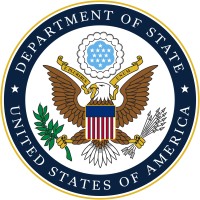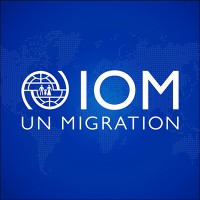
U.S. Department of State Company Cyber Security Posture
state.govThe U.S. Department of State is focused on accomplishing America's mission of diplomacy at home and around the world. The U.S. Department of State manages America’s relationships with foreign governments, international organizations, and the people of other countries. U.S. diplomats and Civil Service professionals carry out the President’s foreign policy and help build a more free, prosperous, and secure world. U.S. Department of State employees, with their skills, character and commitment to public service, are the backbone of America's diplomacy. They represent the people and advocate the interests of the U.S. to the rest of the world. The Foreign Service (FS) is dedicated to representing America and responding to the needs of American citizens in other countries. Members of the Foreign Service can be sent to any embassy, consulate, or other diplomatic mission anywhere in the world, at any time, to serve the diplomatic needs of the United States. Civil Service (CS) employees provide in-depth expertise and continuity in accomplishing all aspects of the Department's mission and are involved in virtually every function of the Department. Civil Service employees issue passports, compile and analyze overseas reports, provide logistical support to posts, consult with Congress about foreign policy initiatives and policies, and formulate and manage the budget. Nearly 7,400 Civil Service (CS) employees serve as a stable resource pool in Washington D.C., at Passport Agencies and field offices throughout the United States, and at several Consulates in Mexico. More than 31,000 Foreign Service National (FSN) employees also supplement the personnel requirements of the Department overseas. FSN employees are local residents of the countries in which we maintain diplomatic posts and consulates. They are valued members of our embassy teams, for they provide continuity for the transient American staff and have language and cultural expertise.
UDS Company Details
doscareers
36920 employees
1422028.0
928
International Affairs
state.gov
1428
U.S_2300227
In-progress
Between 900 and 1000
This score is AI-generated and less favored by cyber insurers, who prefer the TPRM score.
 UDS Global Score
UDS Global Score.png)

U.S. Department of State Company Scoring based on AI Models
| Model Name | Date | Description | Current Score Difference | Score |
|---|---|---|---|---|
| AVERAGE-Industry | 03-12-2025 | This score represents the average cybersecurity rating of companies already scanned within the same industry. It provides a benchmark to compare an individual company's security posture against its industry peers. | N/A | Between 900 and 1000 |
U.S. Department of State Company Cyber Security News & History
| Entity | Type | Severity | Impact | Seen | Url ID | Details | View |
|---|---|---|---|---|---|---|---|
| US State Department | Breach | 50 | 2 | 7/2024 | DOS002071724 | Link | |
Rankiteo Explanation : Attack limited on finance or reputationDescription: The US State Department experienced a potential risk to its digital diplomacy efforts due to technological challenges posed by adversaries like Russia and China. Although there was no specific cyber attack reported, the need for increased cybersecurity and tech-savvy diplomatic strategies indicates a recognition of potential threats. These threats could impact global technological governance and the credibility of the United States in managing anti-democratic tools, which might lead to loss of influence over digital issues and potential regulatory challenges with emerging technologies like AI. | |||||||
| US State Department | Cyber Attack | 100 | 8 | 7/2024 | DOS445070624 | Link | |
Rankiteo Explanation : Attack that could bring to a warDescription: The US State Department has been intensifying its efforts to address the complex cyber challenges posed by adversarial nations. With the development of a cybersecurity training program for diplomats, the department aims to strengthen its digital diplomacy capabilities. These challenges range from combating Russian election interference to mitigating the influence of Chinese technological dominance in industries including 5G telecommunications. The program, led by cyber ambassador Nathaniel Fick, is deemed critical in preserving the integrity of the open internet and democratic institutions worldwide. It represents a strategic endeavor to reclaim US credibility and fortify its position in global digital governance. | |||||||
| US State Department | Vulnerability | 100 | 8 | 7/2024 | DOS704071524 | Link | |
Rankiteo Explanation : Attack that could bring to a warDescription: The US State Department encountered significant cyber-related vulnerabilities that threatened not just the department's internal data but also the broader diplomatic efforts in countering global tech and cyber challenges. Under the influence of adversaries, notably China and Russia, the department faced pressures on its 5G networks and social media platforms, which had potential for wide-reaching impacts on democracy and international relations. The department's strategy included a cybersecurity training program, revealing an initiative to reinforce tech-savvy diplomacy and reassert US influence in digital domains, acknowledging past governance mistakes in social media that had unintended anti-democratic consequences. | |||||||
U.S. Department of State Company Subsidiaries

The U.S. Department of State is focused on accomplishing America's mission of diplomacy at home and around the world. The U.S. Department of State manages America’s relationships with foreign governments, international organizations, and the people of other countries. U.S. diplomats and Civil Service professionals carry out the President’s foreign policy and help build a more free, prosperous, and secure world. U.S. Department of State employees, with their skills, character and commitment to public service, are the backbone of America's diplomacy. They represent the people and advocate the interests of the U.S. to the rest of the world. The Foreign Service (FS) is dedicated to representing America and responding to the needs of American citizens in other countries. Members of the Foreign Service can be sent to any embassy, consulate, or other diplomatic mission anywhere in the world, at any time, to serve the diplomatic needs of the United States. Civil Service (CS) employees provide in-depth expertise and continuity in accomplishing all aspects of the Department's mission and are involved in virtually every function of the Department. Civil Service employees issue passports, compile and analyze overseas reports, provide logistical support to posts, consult with Congress about foreign policy initiatives and policies, and formulate and manage the budget. Nearly 7,400 Civil Service (CS) employees serve as a stable resource pool in Washington D.C., at Passport Agencies and field offices throughout the United States, and at several Consulates in Mexico. More than 31,000 Foreign Service National (FSN) employees also supplement the personnel requirements of the Department overseas. FSN employees are local residents of the countries in which we maintain diplomatic posts and consulates. They are valued members of our embassy teams, for they provide continuity for the transient American staff and have language and cultural expertise.
Access Data Using Our API

Get company history
.png)
UDS Cyber Security News
Texas Cyber Command becomes law, UTSA to play key role
JUNE 3, 2025 — Texas Governor Greg Abbott has signed into law a measure that will create the Texas Cyber Command, the largest state-based cybersecurity ...
State Department reorganization could imperil cyber diplomacy
Congress told the U.S. State Department how to approach global cyber challenges, but the administration's plan would upend that strategy.
Cybersecurity
Our daily life, economic vitality, and national security depend on a stable, safe, and resilient cyberspace.
Here's where the State Department is planning its layoffs and changes
The State Department is moving forward with a plan to eliminate or consolidate more than 300 of its offices and bureaus, according to ...
U.S. Embassy Bangkok FY25 Notice of Funding Opportunity - American Cybersecurity Enhancement Program for Thai Entrepreneurs
The Public Diplomacy Section (PDS) is pleased to announce an open competition for a federal award to develop and implement the American ...
Lawmakers Warn State Dept. Shake-Up Risks Cybersecurity Setbacks
A proposed reorganization of the State Department would undermine its Bureau of Cybersecurity and Digital Policy's (CDP) cybersecurity ...
Federal cuts to information-sharing groups may damage nation's security posture, warn officials
Federal cuts to information-sharing groups may damage nation's security posture, warn officials. Current and former government officials said ...
Trump is shifting cybersecurity to the states, but many aren’t prepared
President Donald Trump recently signed an executive order shifting some of the responsibility from the federal government to states and localities.
No cyber aid for US allies
— A decision by the State Department to freeze foreign aid includes cyber support to allied nations, leaving international partnerships in limbo ...

UDS Similar Companies

United Nations
Founded at the end of the Second World War, the United Nations is an international organization made up of 193 Member States committed to maintaining international peace and security. Every day the UN works to tackle global challenges and deliver results for those most in need. Giving life-sav

UNHCR, the UN Refugee Agency
UNHCR, the UN Refugee Agency, is a global organisation dedicated to saving lives, protecting rights and building a better future for people forced to flee their homes because of conflict and persecution. We lead international action to protect refugees, forcibly displaced communities and stateless

#ExchangeAlumni - Alumni Affairs - State Dept.
Welcome, exchange program alumni! We are Alumni Affairs, an office in the Bureau of Educational and Cultural Affairs (ECA) at the U.S. Department of State. We welcome alumni of all U.S. government exchange programs, from Fulbright to Gilman, IVLP, YALI, YSEALI, YLAI, and many more! We offer grant c

Government of Pakistan
Pakistan has come a long way and today is one of the fastest growing economies of Asia. With over 160 million inhabitants, Pakistan offers its investors a strong and large consumer market with an ever expanding middle class. Strategically placed at the crossroads of South Asia, Central Asia and West

World Health Organization
The World Health Organization's mission: to promote health, keep the world safe, and serve the vulnerable. Working through offices in more than 150 countries, WHO staff work side by side with governments and other partners to ensure the highest attainable level of health for all people. Stay connec

IOM - UN Migration
Established in 1951, the International Organization for Migration is the leading intergovernmental organization in the field of migration and is committed to the principle that humane and orderly migration benefits migrants and society. IOM works with its partners in the international community to

Frequently Asked Questions (FAQ) on Cybersecurity Incidents
UDS CyberSecurity History Information
Total Incidents: According to Rankiteo, UDS has faced 3 incidents in the past.
Incident Types: The types of cybersecurity incidents that have occurred include ['Breach', 'Vulnerability', 'Cyber Attack'].
Total Financial Loss: The total financial loss from these incidents is estimated to be {total_financial_loss}.
Cybersecurity Posture: The company's overall cybersecurity posture is described as The U.S. Department of State is focused on accomplishing America's mission of diplomacy at home and around the world. The U.S. Department of State manages America’s relationships with foreign governments, international organizations, and the people of other countries. U.S. diplomats and Civil Service professionals carry out the President’s foreign policy and help build a more free, prosperous, and secure world. U.S. Department of State employees, with their skills, character and commitment to public service, are the backbone of America's diplomacy. They represent the people and advocate the interests of the U.S. to the rest of the world. The Foreign Service (FS) is dedicated to representing America and responding to the needs of American citizens in other countries. Members of the Foreign Service can be sent to any embassy, consulate, or other diplomatic mission anywhere in the world, at any time, to serve the diplomatic needs of the United States. Civil Service (CS) employees provide in-depth expertise and continuity in accomplishing all aspects of the Department's mission and are involved in virtually every function of the Department. Civil Service employees issue passports, compile and analyze overseas reports, provide logistical support to posts, consult with Congress about foreign policy initiatives and policies, and formulate and manage the budget. Nearly 7,400 Civil Service (CS) employees serve as a stable resource pool in Washington D.C., at Passport Agencies and field offices throughout the United States, and at several Consulates in Mexico. More than 31,000 Foreign Service National (FSN) employees also supplement the personnel requirements of the Department overseas. FSN employees are local residents of the countries in which we maintain diplomatic posts and consulates. They are valued members of our embassy teams, for they provide continuity for the transient American staff and have language and cultural expertise..
Detection and Response: The company detects and responds to cybersecurity incidents through {description_of_detection_and_response_process}.
Incident Details
Incident 1: Ransomware Attack
Title: {Incident_Title}
Description: {Brief_description_of_the_incident}
Date Detected: {Detection_Date}
Date Publicly Disclosed: {Disclosure_Date}
Date Resolved: {Resolution_Date}
Type: {Type_of_Attack}
Attack Vector: {Attack_Vector}
Vulnerability Exploited: {Vulnerability}
Threat Actor: {Threat_Actor}
Motivation: {Motivation}
Incident 2: Data Breach
Title: {Incident_Title}
Description: {Brief_description_of_the_incident}
Date Detected: {Detection_Date}
Date Publicly Disclosed: {Disclosure_Date}
Date Resolved: {Resolution_Date}
Type: {Type_of_Attack}
Attack Vector: {Attack_Vector}
Vulnerability Exploited: {Vulnerability}
Threat Actor: {Threat_Actor}
Motivation: {Motivation}
Common Attack Types: As of now, the company has not encountered any reported incidents involving common cyberattacks.
Identification of Attack Vectors: The company identifies the attack vectors used in incidents through {description_of_identification_process}.
Impact of the Incidents
Incident 1: Ransomware Attack
Financial Loss: {Financial_Loss}
Data Compromised: {Data_Compromised}
Systems Affected: {Systems_Affected}
Downtime: {Downtime}
Operational Impact: {Operational_Impact}
Conversion Rate Impact: {Conversion_Rate_Impact}
Revenue Loss: {Revenue_Loss}
Customer Complaints: {Customer_Complaints}
Brand Reputation Impact: {Brand_Reputation_Impact}
Legal Liabilities: {Legal_Liabilities}
Identity Theft Risk: {Identity_Theft_Risk}
Payment Information Risk: {Payment_Information_Risk}
Incident 2: Data Breach
Financial Loss: {Financial_Loss}
Data Compromised: {Data_Compromised}
Systems Affected: {Systems_Affected}
Downtime: {Downtime}
Operational Impact: {Operational_Impact}
Conversion Rate Impact: {Conversion_Rate_Impact}
Revenue Loss: {Revenue_Loss}
Customer Complaints: {Customer_Complaints}
Brand Reputation Impact: {Brand_Reputation_Impact}
Legal Liabilities: {Legal_Liabilities}
Identity Theft Risk: {Identity_Theft_Risk}
Payment Information Risk: {Payment_Information_Risk}
Average Financial Loss: The average financial loss per incident is {average_financial_loss}.
Commonly Compromised Data Types: The types of data most commonly compromised in incidents are {list_of_commonly_compromised_data_types}.
Incident 1: Ransomware Attack
Entity Name: {Entity_Name}
Entity Type: {Entity_Type}
Industry: {Industry}
Location: {Location}
Size: {Size}
Customers Affected: {Customers_Affected}
Incident 2: Data Breach
Entity Name: {Entity_Name}
Entity Type: {Entity_Type}
Industry: {Industry}
Location: {Location}
Size: {Size}
Customers Affected: {Customers_Affected}
Response to the Incidents
Incident 1: Ransomware Attack
Incident Response Plan Activated: {Yes/No}
Third Party Assistance: {Yes/No}
Law Enforcement Notified: {Yes/No}
Containment Measures: {Containment_Measures}
Remediation Measures: {Remediation_Measures}
Recovery Measures: {Recovery_Measures}
Communication Strategy: {Communication_Strategy}
Adaptive Behavioral WAF: {Adaptive_Behavioral_WAF}
On-Demand Scrubbing Services: {On_Demand_Scrubbing_Services}
Network Segmentation: {Network_Segmentation}
Enhanced Monitoring: {Enhanced_Monitoring}
Incident 2: Data Breach
Incident Response Plan Activated: {Yes/No}
Third Party Assistance: {Yes/No}
Law Enforcement Notified: {Yes/No}
Containment Measures: {Containment_Measures}
Remediation Measures: {Remediation_Measures}
Recovery Measures: {Recovery_Measures}
Communication Strategy: {Communication_Strategy}
Adaptive Behavioral WAF: {Adaptive_Behavioral_WAF}
On-Demand Scrubbing Services: {On_Demand_Scrubbing_Services}
Network Segmentation: {Network_Segmentation}
Enhanced Monitoring: {Enhanced_Monitoring}
Incident Response Plan: The company's incident response plan is described as {description_of_incident_response_plan}.
Third-Party Assistance: The company involves third-party assistance in incident response through {description_of_third_party_involvement}.
Data Breach Information
Incident 2: Data Breach
Type of Data Compromised: {Type_of_Data}
Number of Records Exposed: {Number_of_Records}
Sensitivity of Data: {Sensitivity_of_Data}
Data Exfiltration: {Yes/No}
Data Encryption: {Yes/No}
File Types Exposed: {File_Types}
Personally Identifiable Information: {Yes/No}
Prevention of Data Exfiltration: The company takes the following measures to prevent data exfiltration: {description_of_prevention_measures}.
Handling of PII Incidents: The company handles incidents involving personally identifiable information (PII) through {description_of_handling_process}.
Ransomware Information
Incident 1: Ransomware Attack
Ransom Demanded: {Ransom_Amount}
Ransom Paid: {Ransom_Paid}
Ransomware Strain: {Ransomware_Strain}
Data Encryption: {Yes/No}
Data Exfiltration: {Yes/No}
Ransom Payment Policy: The company's policy on paying ransoms in ransomware incidents is described as {description_of_ransom_payment_policy}.
Data Recovery from Ransomware: The company recovers data encrypted by ransomware through {description_of_data_recovery_process}.
Regulatory Compliance
Incident 1: Ransomware Attack
Regulations Violated: {Regulations_Violated}
Fines Imposed: {Fines_Imposed}
Legal Actions: {Legal_Actions}
Regulatory Notifications: {Regulatory_Notifications}
Incident 2: Data Breach
Regulations Violated: {Regulations_Violated}
Fines Imposed: {Fines_Imposed}
Legal Actions: {Legal_Actions}
Regulatory Notifications: {Regulatory_Notifications}
Regulatory Frameworks: The company complies with the following regulatory frameworks regarding cybersecurity: {list_of_regulatory_frameworks}.
Ensuring Regulatory Compliance: The company ensures compliance with regulatory requirements through {description_of_compliance_measures}.
Lessons Learned and Recommendations
Incident 1: Ransomware Attack
Lessons Learned: {Lessons_Learned}
Incident 2: Data Breach
Lessons Learned: {Lessons_Learned}
Incident 1: Ransomware Attack
Recommendations: {Recommendations}
Incident 2: Data Breach
Recommendations: {Recommendations}
Key Lessons Learned: The key lessons learned from past incidents are {list_of_key_lessons_learned}.
Implemented Recommendations: The company has implemented the following recommendations to improve cybersecurity: {list_of_implemented_recommendations}.
References
Additional Resources: Stakeholders can find additional resources on cybersecurity best practices at {list_of_additional_resources}.
Investigation Status
Incident 1: Ransomware Attack
Investigation Status: {Investigation_Status}
Incident 2: Data Breach
Investigation Status: {Investigation_Status}
Communication of Investigation Status: The company communicates the status of incident investigations to stakeholders through {description_of_communication_process}.
Stakeholder and Customer Advisories
Incident 1: Ransomware Attack
Stakeholder Advisories: {Stakeholder_Advisories}
Customer Advisories: {Customer_Advisories}
Incident 2: Data Breach
Stakeholder Advisories: {Stakeholder_Advisories}
Customer Advisories: {Customer_Advisories}
Advisories Provided: The company provides the following advisories to stakeholders and customers following an incident: {description_of_advisories_provided}.
Initial Access Broker
Incident 1: Ransomware Attack
Entry Point: {Entry_Point}
Reconnaissance Period: {Reconnaissance_Period}
Backdoors Established: {Backdoors_Established}
High Value Targets: {High_Value_Targets}
Data Sold on Dark Web: {Yes/No}
Incident 2: Data Breach
Entry Point: {Entry_Point}
Reconnaissance Period: {Reconnaissance_Period}
Backdoors Established: {Backdoors_Established}
High Value Targets: {High_Value_Targets}
Data Sold on Dark Web: {Yes/No}
Monitoring and Mitigation of Initial Access Brokers: The company monitors and mitigates the activities of initial access brokers through {description_of_monitoring_and_mitigation_measures}.
Post-Incident Analysis
Incident 1: Ransomware Attack
Root Causes: {Root_Causes}
Corrective Actions: {Corrective_Actions}
Incident 2: Data Breach
Root Causes: {Root_Causes}
Corrective Actions: {Corrective_Actions}
Post-Incident Analysis Process: The company's process for conducting post-incident analysis is described as {description_of_post_incident_analysis_process}.
Corrective Actions Taken: The company has taken the following corrective actions based on post-incident analysis: {list_of_corrective_actions_taken}.
Additional Questions
General Information
Ransom Payment History: The company has {paid/not_paid} ransoms in the past.
Last Ransom Demanded: The amount of the last ransom demanded was {last_ransom_amount}.
Last Attacking Group: The attacking group in the last incident was {last_attacking_group}.
Incident Details
Most Recent Incident Detected: The most recent incident detected was on {most_recent_incident_detected_date}.
Most Recent Incident Publicly Disclosed: The most recent incident publicly disclosed was on {most_recent_incident_publicly_disclosed_date}.
Most Recent Incident Resolved: The most recent incident resolved was on {most_recent_incident_resolved_date}.
Impact of the Incidents
Highest Financial Loss: The highest financial loss from an incident was {highest_financial_loss}.
Most Significant Data Compromised: The most significant data compromised in an incident was {most_significant_data_compromised}.
Most Significant System Affected: The most significant system affected in an incident was {most_significant_system_affected}.
Response to the Incidents
Third-Party Assistance in Most Recent Incident: The third-party assistance involved in the most recent incident was {third_party_assistance_in_most_recent_incident}.
Containment Measures in Most Recent Incident: The containment measures taken in the most recent incident were {containment_measures_in_most_recent_incident}.
Data Breach Information
Most Sensitive Data Compromised: The most sensitive data compromised in a breach was {most_sensitive_data_compromised}.
Number of Records Exposed: The number of records exposed in the most significant breach was {number_of_records_exposed}.
Ransomware Information
Highest Ransom Demanded: The highest ransom demanded in a ransomware incident was {highest_ransom_demanded}.
Highest Ransom Paid: The highest ransom paid in a ransomware incident was {highest_ransom_paid}.
Regulatory Compliance
Highest Fine Imposed: The highest fine imposed for a regulatory violation was {highest_fine_imposed}.
Most Significant Legal Action: The most significant legal action taken for a regulatory violation was {most_significant_legal_action}.
Lessons Learned and Recommendations
Most Significant Lesson Learned: The most significant lesson learned from past incidents was {most_significant_lesson_learned}.
Most Significant Recommendation Implemented: The most significant recommendation implemented to improve cybersecurity was {most_significant_recommendation_implemented}.
References
Most Recent Source: The most recent source of information about an incident is {most_recent_source}.
Most Recent URL for Additional Resources: The most recent URL for additional resources on cybersecurity best practices is {most_recent_url}.
Investigation Status
Current Status of Most Recent Investigation: The current status of the most recent investigation is {current_status_of_most_recent_investigation}.
Stakeholder and Customer Advisories
Most Recent Stakeholder Advisory: The most recent stakeholder advisory issued was {most_recent_stakeholder_advisory}.
Most Recent Customer Advisory: The most recent customer advisory issued was {most_recent_customer_advisory}.
Initial Access Broker
Most Recent Entry Point: The most recent entry point used by an initial access broker was {most_recent_entry_point}.
Most Recent Reconnaissance Period: The most recent reconnaissance period for an incident was {most_recent_reconnaissance_period}.
Post-Incident Analysis
Most Significant Root Cause: The most significant root cause identified in post-incident analysis was {most_significant_root_cause}.
Most Significant Corrective Action: The most significant corrective action taken based on post-incident analysis was {most_significant_corrective_action}.
What Do We Measure?
















Every week, Rankiteo analyzes billions of signals to give organizations a sharper, faster view of emerging risks. With deeper, more actionable intelligence at their fingertips, security teams can outpace threat actors, respond instantly to Zero-Day attacks, and dramatically shrink their risk exposure window.
These are some of the factors we use to calculate the overall score:
Identify exposed access points, detect misconfigured SSL certificates, and uncover vulnerabilities across the network infrastructure.
Gain visibility into the software components used within an organization to detect vulnerabilities, manage risk, and ensure supply chain security.
Monitor and manage all IT assets and their configurations to ensure accurate, real-time visibility across the company's technology environment.
Leverage real-time insights on active threats, malware campaigns, and emerging vulnerabilities to proactively defend against evolving cyberattacks.




